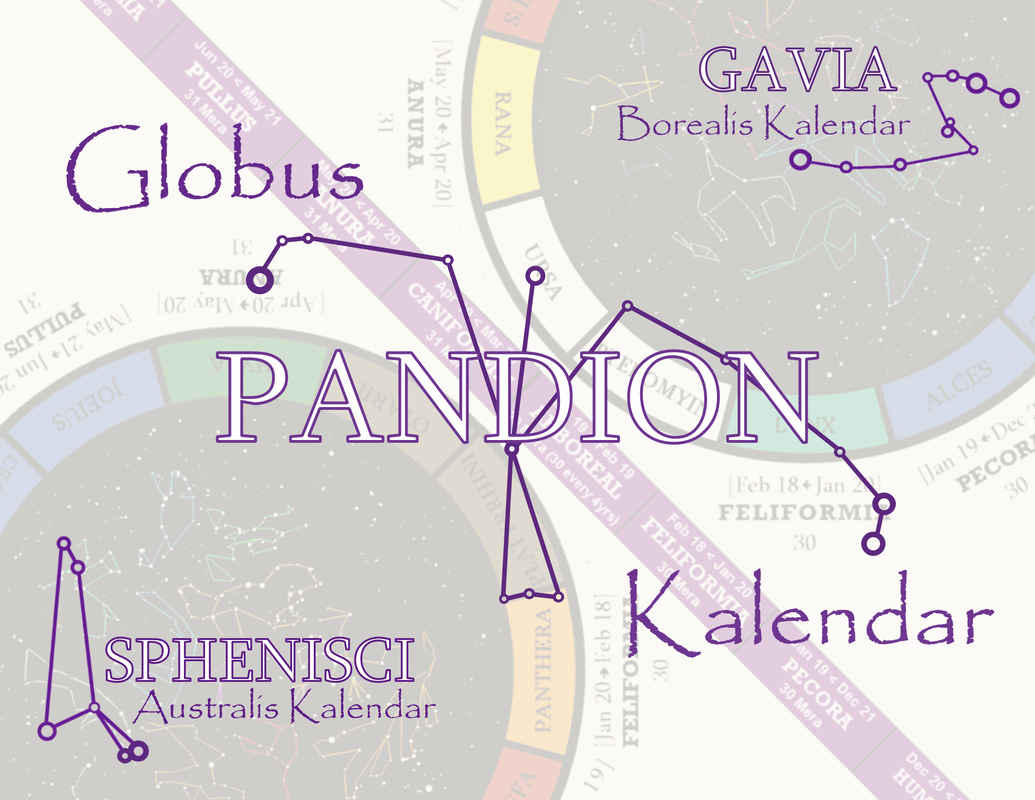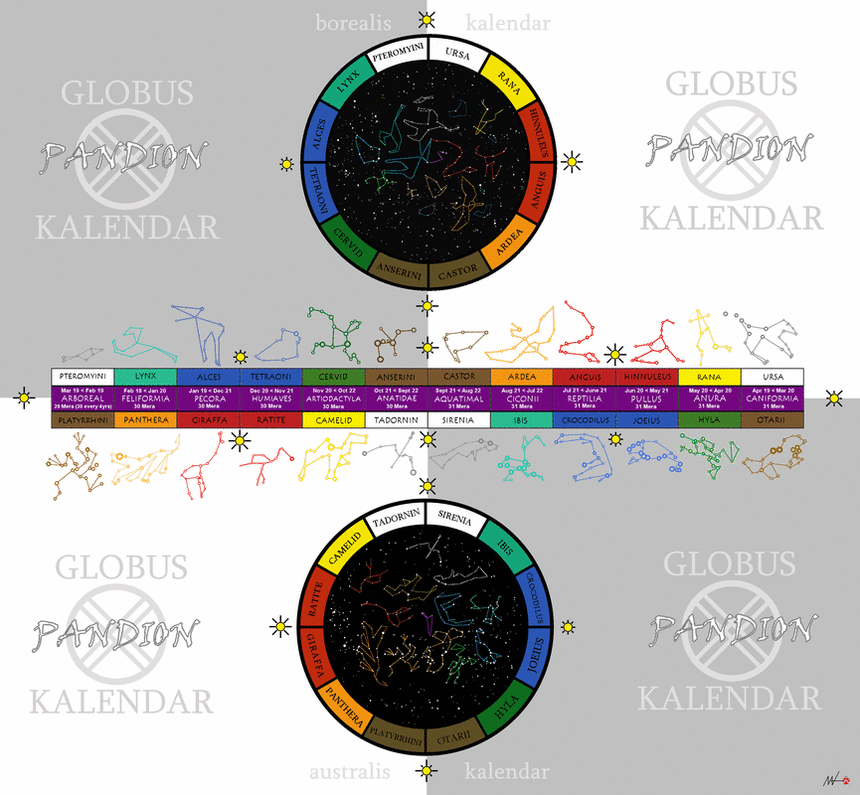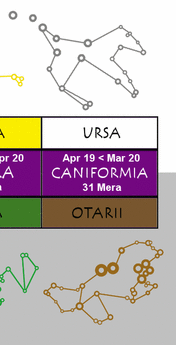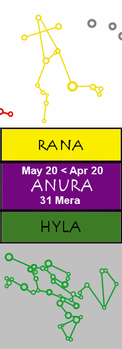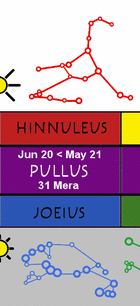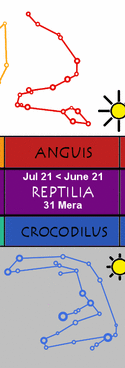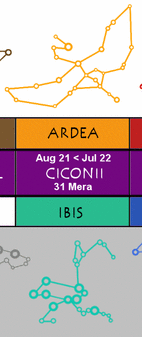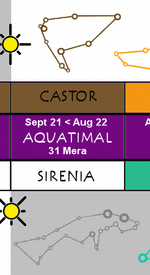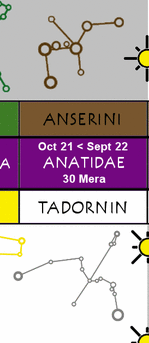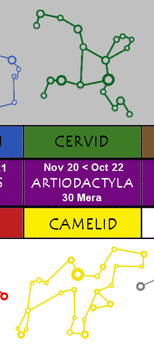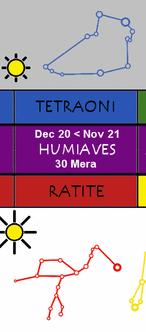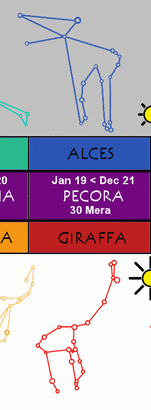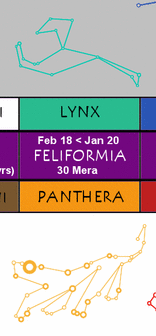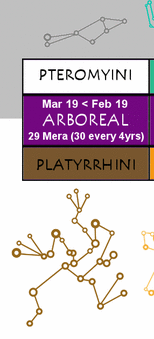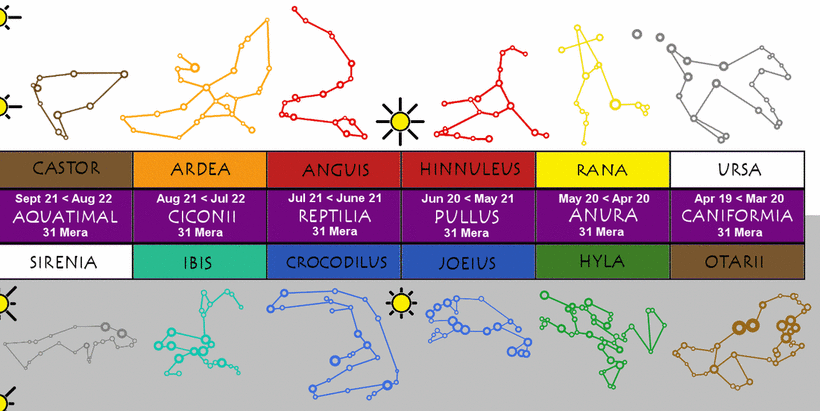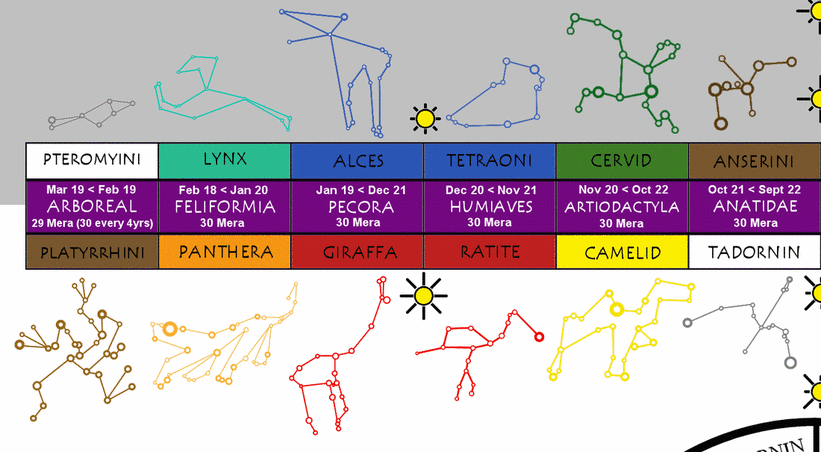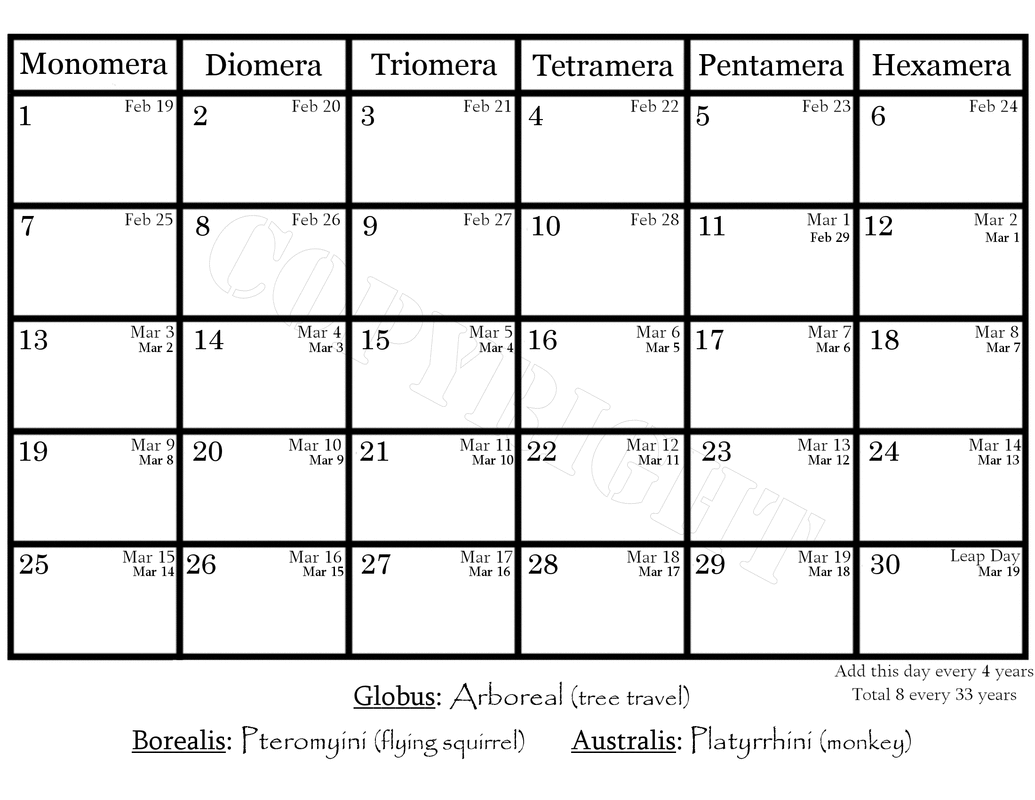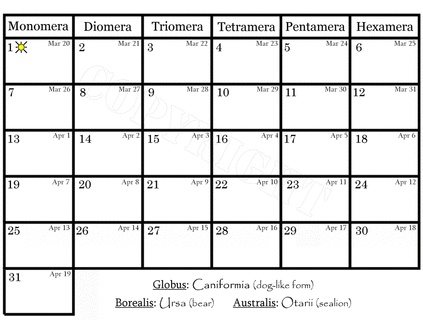© Rua Lupa
The image above is Pandion, the Globus Kalendar ('world calendar'). Pandion is the genus of Osprey; One of the few water dependent bird species (connects to land, air, and water) to live throughout the world with the exception of Antarctica. Hence this Kalendar being named after it. This Kalendar chart is specifically designed to combine the Kalendars of the two hemispheres by way of similarity between the two species represented in the aligned constellations on either end of the world. This is beneficial in that it retains a respect for the differences each hemisphere experiences, while at the same time bringing the world together in being able to communicate the time of year to each other.
The constellations in the center of the hemispheres are Gavia (Loon/Diver) in borealis (northern hemisphere), and Sphenisci (Penguin) in australis (southern hemisphere); of which all the other constellations and year revolves; hence the Year Wheels being named after them (read the pages for the borealis & australis Kalendars for a further background).
Each Year Wheel/Kalendar is a solar calendar of 365 days a year with one day added every four years. That one day would be added to the end of mensis Arboreal (Tree travel) [Gavia = Pteromyini (flying squirrel) / Sphenisci = Platyrrhini (Monkey)]. With the new year on Caniformia 1. Over a period of 33 years, only 8 leap years occur to maintain long term accuracy.
The four images of the sun represent the four major solar changes of the year in the form of the four changes of a day:
The names of each mensis (Kalendar month) derives from the constellation that is in the center of the night sky in each hemisphere that time of year, which is named after an animal that is active during that same time of year. Here are the names of each mensis, and translation, from the beginning of the year to the end:
NOTE: The First Mensis (Kalendar Month) mentioned in this description is Pandion (Osprey - World Kalendar) followed by [Gavia (Loon/Diver - Northern Hemisphere) / Sphenisci (Penguin - Southern Hemisphere)]. When looking at the Charts above, 30 'Mera' would mean 30 'Days'.
MENSIS & HEBDO, The Kalendar Month & Week in Detail
There are 6 days in a week (called hebdo to emphasis this difference), and every mensis (month) begins on the same day of the week, Monomera (day one). In the top right corners is the equivalent day in the Gregorian calendar.
There are 6 days in a week (called hebdo to emphasis this difference), and every mensis (month) begins on the same day of the week, Monomera (day one). In the top right corners is the equivalent day in the Gregorian calendar.
|
A typical mensis of the Borealis 'night half' / Australis 'day half' of the year (between the equinoxes) has 30 days in a month, with the exception of the last mensis in the year, being the one depicted, having 29 days in a common month and 30 every four years with a total of 8 leap years every 33 years.
|
This is a typical mensis of the Borealis 'day half' / Australis 'night half' of the year (between the equinoxes) with 31 days in a month. Even with the additional last day on Monomera, it is considered an extra day as a day off, with the following month starting on Monomera as if the last day didn't take that space. This removes the conventional shift in days of the week typical in the Gregorian calendar, making this kalendar perpetual as it never needs to be replaced because the days of the week never shift.
|

